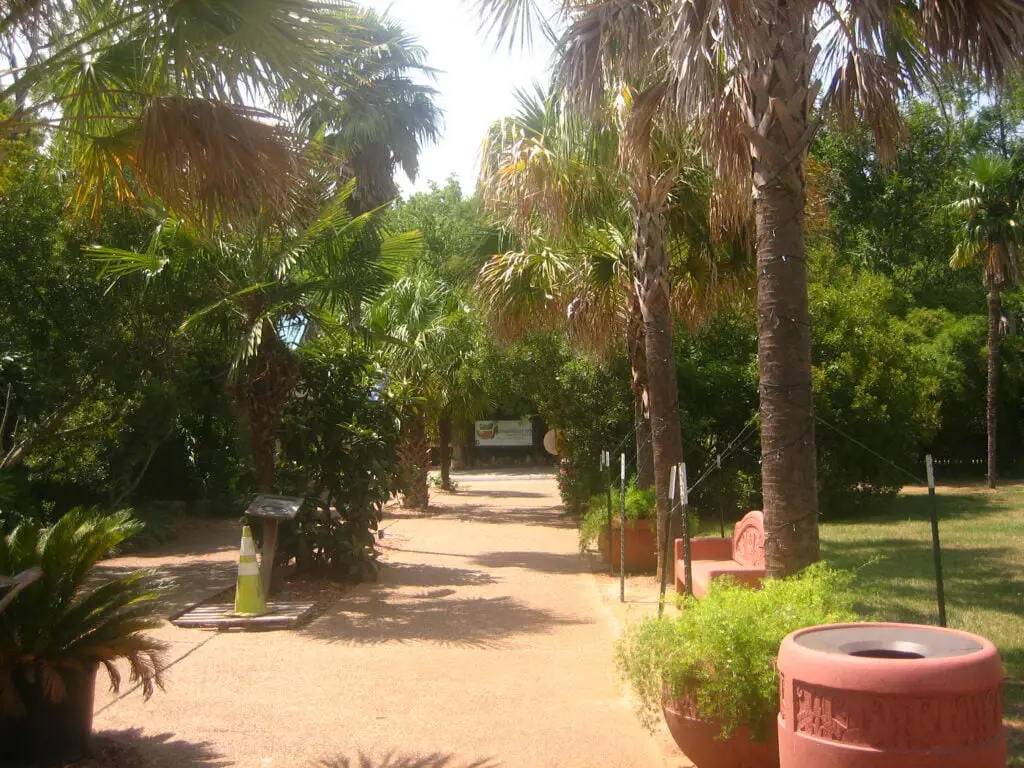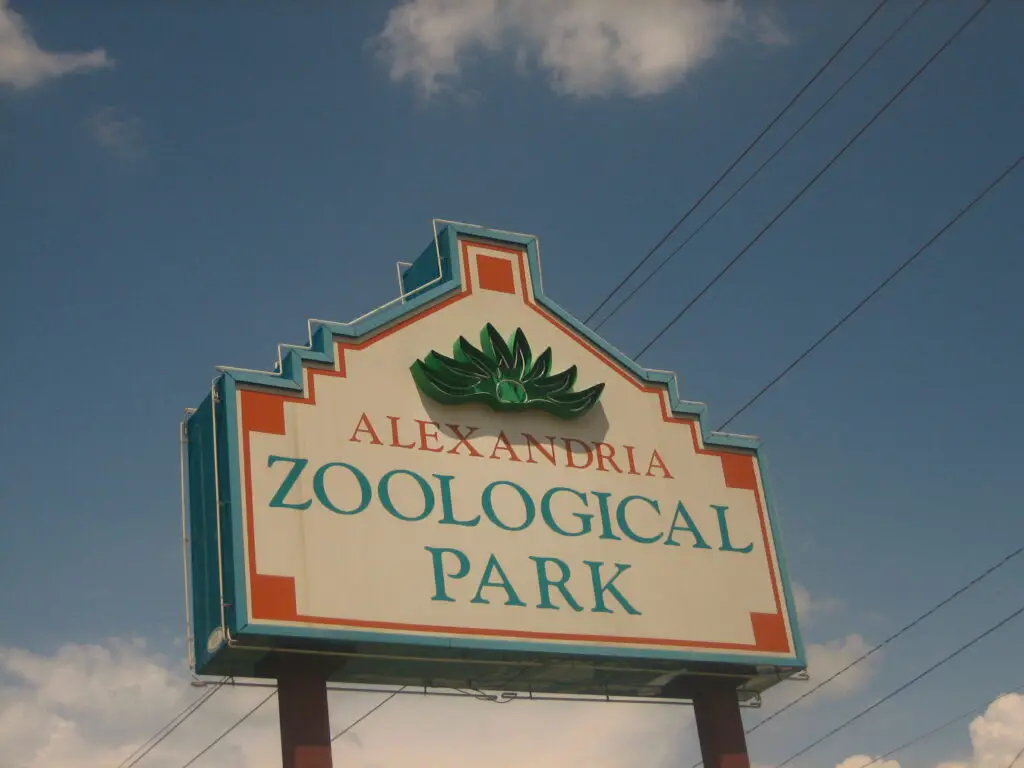A Stroll Through History
The Alexandria Zoo, nestled in the heart of Alexandria, LA, started its journey in 1926. Imagine a small park, Bringhurst Park, to be exact, where a few cages housed what were essentially discarded pets: rabbits, goats, and deer. It was a modest beginning, nothing like the sprawling 33-acre haven it is today.
The 1960s brought a turning point. The USDA issued a stark ultimatum: upgrade or shut down. The city’s response was swift and decisive.
They formed a committee, a precursor to what we now know as Friends of the Alexandria Zoo (FOTAZ). This move wasn’t just about saving a few animals but preserving a community treasure.
Enter Robert Leslie Whitt in 1974, a name that would become synonymous with the zoo’s transformation.
Hired by Streets and Parks Commissioner Malcolm P. Hebert, Whitt wasn’t just a director; he was a visionary. Under his guidance, the zoo thrived, expanding its reach and refining its mission.
The Alexandria Zoo’s story is a testament to community spirit and dedication. It reminds us that from small beginnings, great things can grow.
Visiting this historic zoo isn’t just a day out for anyone looking for things to do in Alexandria, LA; it’s a walk through a rich, evolving story.
Alexandria Zoo: Surviving the Storm
In 2020, Hurricane Laura tore through Louisiana, leaving a trail of destruction in its wake. The Alexandria Zoo was not spared. Over 20 animal habitats lay in ruins, roofs were torn off, and fences lay twisted on the ground.
The storm uprooted more than 70 trees, transforming lush exhibits into scenes of devastation. The cougar habitat, a favorite among visitors, was completely destroyed.
The community’s response was heartening. Support poured in from all corners, not just from Alexandria but from zoos across the nation. The spirit of solidarity was palpable.
Repair efforts began immediately, with local businesses and volunteers working tirelessly alongside zoo staff. It was a race against time to restore the zoo to its former glory.
The gates reopened on March 12, 2021, a date that marked a new chapter in the zoo’s history.
The reopening was a celebration of resilience, a testament to the dedication of the community and the zoo staff. The Alexandria Zoo had weathered the storm, emerging stronger and more determined than ever.
A Walk on the Wild Side: Exhibits and Habitats
Stepping into the Alexandria Zoo is like embarking on a global adventure. The “Land of the Jaguar” transports you to Latin America.
This 2.5-acre exhibit is a riot of color and sound, home to over 40 species, including the majestic jaguar, playful monkeys, and vibrant birds.

The Mayan ruins and Amazonian village settings are gateways to understanding diverse ecosystems.
The “Louisiana Habitat” brings the story closer to home. Spanning 3.5 acres, this exhibit is a love letter to the state’s unique landscapes.
From marshes to swamps, visitors can see alligators, otters, and cougars in settings that mimic their natural habitats. It’s educational, yes, but also a reminder of the beauty that lies in our own backyard.
The “African Experience” is an ongoing journey. Since its first phase opened in 2003, it has been a highlight.
The large, naturalistic habitats for African lions, complete with rock formations and waterfalls, are breathtaking.
The exhibit is expanding, promising even more for visitors to explore. It’s a commitment to conservation and education, bringing the savannahs of Africa to the heart of Louisiana.
Conservation and Education: Beyond the Exhibits
I believe that a zoo’s heart lies in its exhibits and its commitment to conservation and education. The Alexandria Zoo stands out in this regard.
They’re part of around 20 Species Survival Plans, a fact that speaks volumes about their dedication.
These aren’t just any animals; they’re ambassadors for their wild counterparts. From the Andean condor to the red wolf, each one has a story, a story of survival and hope.
Education here goes beyond the basics. It’s not about reading a sign next to an enclosure. The zoo organizes special events like the Wild Tie & Tennis Shoe Night and the International Migratory Bird Day.

These events are more than just fun days out; they’re crafted to spark a connection and turn interest into action for conservation.
The 2015 incident with the cotton-top tamarins was a wake-up call. It was a tragic event, but the zoo took it as a learning opportunity.
They increased their focus on animal care and public education, which sends a clear message that they’re about protecting animals within the zoo and in the wild.
Engaging the Community: Events and Attractions
The Alexandria Zoo knows how to throw a party that brings people and nature together. Take the Bayou Le Zoo Choo Choo, for example.
It’s an invitation to see the zoo from a different perspective and appreciates nature’s beauty while having fun.
Then there’s the Holiday Light Safari. Imagine the zoo, a place already magical, transformed into a winter wonderland. It’s a highlight of the year, drawing families from all over Louisiana.
But it’s more than just lights and festive cheer; it’s about community, about coming together to celebrate the natural world.
The introduction of the Aussie Aviary is another stroke of genius. It’s interactive, allowing visitors to get up close with Australian birds.
This experience fosters a deeper understanding and appreciation for birds. The zoo isn’t just a place to visit but to learn, engage, and be inspired.
The Future Roars Ahead
I think the Alexandria Zoo is on an exciting path forward. The arrival of Philomena, the jaguar from Memphis Zoo, is a big deal. It’s about contributing to the conservation of a species.
Pairing her with Bebu, the male jaguar, could help ensure the survival of these magnificent creatures. It’s a clear sign that the zoo is serious about its role in global conservation efforts.
I’m particularly excited about the expansion of the African Experience. This is an evolution. Adding new species and habitats enhances the zoo’s educational and conservation mission and creates new opportunities for visitors to learn about and connect with the natural world.
The zoo’s future projects show a commitment to growth and improvement. They’re not resting on their laurels; they’re pushing forward, ensuring they remain relevant and contributing to conservation and education.
This forward-thinking approach sets them apart and ensures they’ll remain a vital part of the community for years to come.
Planning Your Visit
If you’re considering visiting the Alexandria Zoo, you should know a few things. First off, the zoo is located at 3016 Masonic Drive, right in the heart of Alexandria, LA. It’s easy to find and accessible.
Before you go, check the zoo’s website for the latest information on opening hours and ticket prices. They offer different rates for adults, children, and seniors, so make sure you know what applies to you.
Also, look out for any special events that might be happening during your visit. These can add a whole new dimension to your experience.
Finally, make the most of your visit. Arrive early to beat the crowds and the heat, especially in summer.
Wear comfortable shoes because there’s a lot to see, and you’ll be doing a lot of walking. Don’t forget to bring a camera – you’ll want to capture the memories.
And most importantly, keep an open mind. The zoo is not just a place to see animals but to learn about and connect with the natural world.
